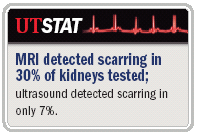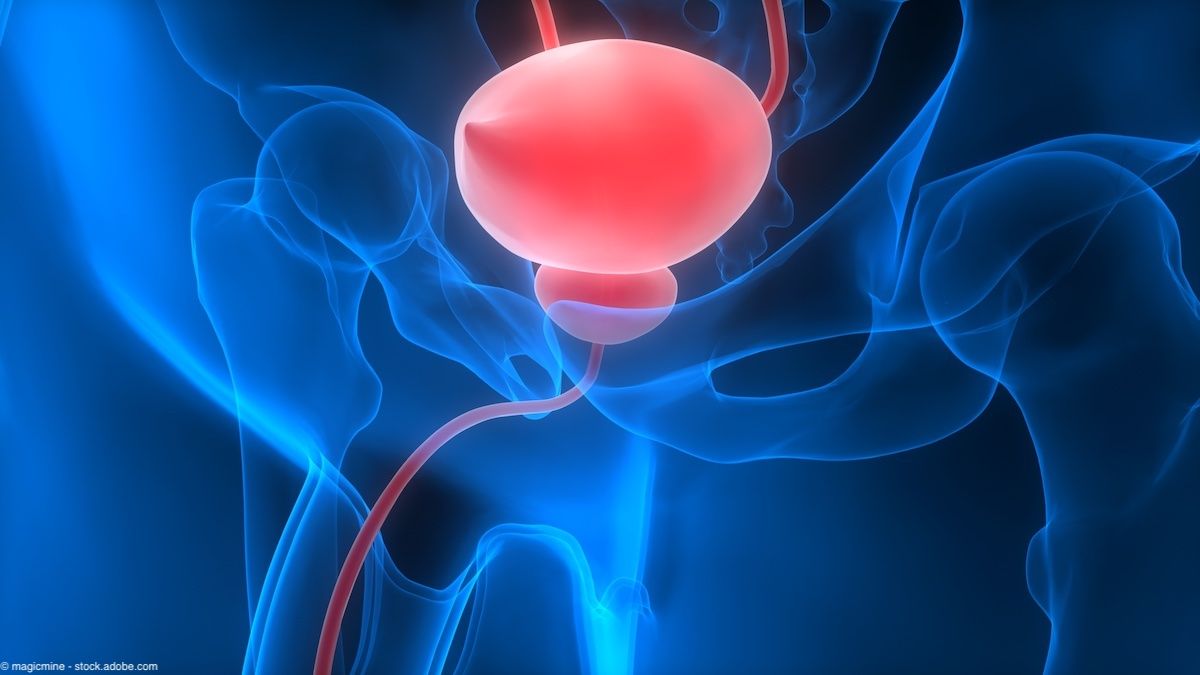Article
MRI-based imaging shows value in pediatric diagnoses
Author(s):
Atlanta-Magnetic resonance imaging has exciting new applications in diagnosing and evaluating of pediatric urologic conditions, according to several studies presented here at the 2006 American Academy of Pediatrics Section on Urology annual meeting.

Researchers from the Stanford University School of Medicine, Stanford, CA, reported that MRI was superior to ultrasound in the detection of renal damage induced by vesico-ureteral reflux.
Renal abnormalities typically are detected by ultrasound or nuclear scan. The Stanford group, led by Linda D. Shortliffe, MD, sought to determine whether MRI would be a superior technique for detecting renal parenchymal atrophy.

MRI detected traditional scarring in 6% to 58% of kidneys scanned, with increasing scars associated with a higher grade of VUR. In comparison, ultrasound detected scarring in only 7%.
"What was surprising is the finding that a majority of the refluxing kidneys may have global generalized atrophy rather than a renal scar traditionally used as a measure of post-infection damage," Dr. Shortliffe said.
She and colleagues concluded that MRI is superior to ultrasound in identifying subtle renal parenchymal damage. Future studies are planned to confirm this finding in a larger cohort of patients.

MRI in cloacal malformations
A second study from Wilford Hall USAF Medical Center, San Antonio, and Children's Memorial Hospital, Chicago, introduced three-dimensional magnetic resonance genitography (3-D MRG) as a novel tool for assessing complex cloacal malformations. Currently, contrast genitography and endoscopy are standard approaches for cloacal assessment. However, standard genitography uses radiation and often provides incomplete anatomic information, requiring lengthy endoscopy to fully evaluate the malformations. Standard MRI also can be used at the time of evaluation for occult dysraphism or tethered cord, but it typically produces images that lack definition of the common channel and confluence.
Researchers tested 3-D MRG for its ability to offer superior imaging of the complex anatomic features associated with cloacal malformations.

Prior to surgery, four female infants with cloacal malformations were evaluated with standard genitography, endoscopy, and 3-D MRG. 3-D MRG was performed during instillation of a diluted gadolinium solution through the common channel, mucus fistula, and cutaneous vesicostomy, when present.
In all four cases, 3D-MRG provided superior imaging of the malformation compared with standard genitography. More important, it also generated more information than endoscopy, including anatomic information concerning genital tract anomalies and hindgut confluence. No complications occurred in any infant as a result of the 3-D MRG.
"Endoscopy is extremely important, and 3-D MRG will not replace this technique, but it provides complementary information and probably will shorten preoperative endoscopy," Dr. Yerkes concluded.
MRI in vesicoureteral reflux
In another application of MRI, urologists from Shiga University of Medical Science, Japan, compared magnetic resonance voiding cystourethrography (MRVCUG) with standard VCUG in the diagnosis and management of VUR.
MRVCUG is an attractive alternative to VCUG because it does not require radiation or catheterization; however, it tends to provide false-positive results in cases where the ureter is dilated. Further, lower-grade cases of VUR can be missed by MRVCUG, providing false-negative results.
In this study, MRVCUG exhibited a sensitivity rate of 81.1%, and was 88.7% specific for diagnosis of VUR. Of the patients assessed by MRVCUG, 15.6% proved to be false negative and 13.3%, false positive compared with VCUG, reported Kazuyoshi Johnin, MD, a study co-author.
Dr. Johnin and colleagues maintained that MRVCUG is a viable alternative to standard VCUG, but advancement in sensitivity and specificity is necessary before it becomes the gold standard in VUR diagnoses. These and other studies presented at the meeting revealed that MRI techniques are increasingly being used and optimized as a noninvasive diagnostic approach for urologic abnormalities.





